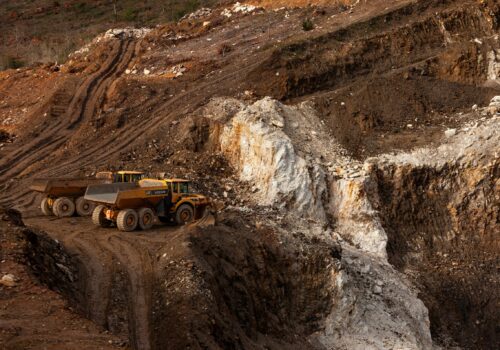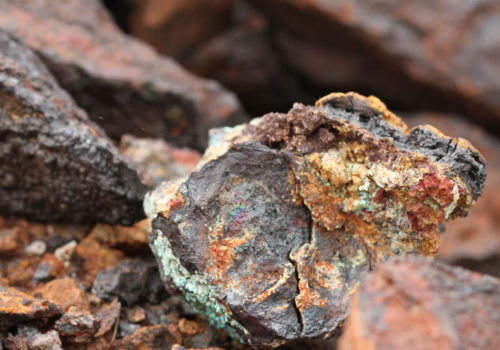On critical minerals, the US needs more than just supply. It needs refining power.
When China announced export controls on several critical minerals—including rare earth elements—and related processing technologies and materials this October, the United States well understood the enormous economic consequences such restrictions could carry. Washington rushed to the negotiating table, resulting in a one-year pause on the measures, wrapping up the latest round of tit-for-tat export control escalations between the two countries.
This episode illustrates the true power of critical minerals. They now sit at the center of economic policymaking worldwide, with advanced economies racing to secure reliable access to the metals that power the modern global economy.
It is no surprise that the global race to secure long-term access to these resources is accelerating. The list of critical minerals is extensive—the latest US Department of the Interior assessment identifies fifty-four such commodities. But four of them stand out for their strategic value: lithium, nickel, cobalt, and graphite. These minerals are foundational to the future energy economy, in part because they form the core inputs of lithium-ion technologies that power electric vehicles, drones, grid storage, and modern electronics. At the same time, key nodes of their supply chains are highly concentrated. Securing access to these minerals is essential for economic competitiveness, national security, and the global energy transition.
Serious players in the critical minerals landscape specialize in at least one of three key assets—and the assets that these countries lack can present strategic vulnerabilities. One asset is access to reserves or mineral supply, either through geographic fortune or effective dealmaking with nations that host these resources. A second is processing capacity. While raw materials matter, true strategic advantage comes from the ability to reduce dependence on others to make use of those raw materials. And a third is strong export capability, which depends on having either an abundant supply, advanced processing infrastructure, or, ideally, both.
For the United States, the picture is mixed when it comes to the first key asset. But it isn’t as bad as many assume. While the United States holds significant geological potential for various critical minerals, it has not benefited from the same geological fortune in several essential deposits. Even where resources exist, production is frequently uneconomical, permitting processes are highly restrictive, and robust environmental standards further constrain the ability to scale extraction and processing. What it does have, however, is a strong capacity for strategic dealmaking. Both the Biden and Trump administrations have been notably successful in securing deals with countries with reserves. The chart below illustrates just how effective these efforts have been.
US efforts to secure access to lithium, nickel, and cobalt supplies have been largely successful. Countries shown on the graph in green represent those with active critical minerals agreements with the United States. Notably, those agreements include the $8.5 billion deal with Australia, a country that holds substantial reserves of key resources. In addition, the United States benefits from its long-standing free trade agreement with Chile—a major lithium producer. Although the free trade agreement does not explicitly address critical minerals, it makes Chile eligible for US tax credits. This preferential status means that Chilean lithium can enter the US market without additional tariffs, effectively making Chilean exports more cost-competitive.
The United States continues to lag in securing formal access to graphite, with no completed agreements so far and only ongoing negotiations with Brazil and a few African countries, including Mozambique, Madagascar, and Tanzania. Graphite remains especially challenging because China controls roughly 90 percent of global output—including extraction, processing, and exports.
However, the absence of a deal on graphite or any other mineral does not mean the United States is inactive on the ground in countries that host important reserves. The United States uses its development agencies, such as the Development Finance Corporation, to support private-sector deals, especially in Africa.
Of course, there are the other two critical components of supply-chain power: processing capacity and exports. Using lithium as an example, the chart below shows that reserves are relatively well distributed across the globe. However, processing capacity is not. Refining is almost completely concentrated in just two countries: China, which controls about 65 percent, and Chile, which holds roughly 25 percent. Processing capacity also directly shapes export power. While countries such as Australia can export large volumes of raw materials, the real value in the supply chain comes from exporting processed products.
Looking again at the four examples of lithium, nickel, cobalt, and graphite, their combined global market value in 2024, based on my calculations, was roughly $100 billion, about the size of Luxembourg’s gross domestic product. For comparison, the global oil and gas market that same year was valued at around six trillion dollars. I estimate that by 2030, the market value of these four critical minerals is projected to nearly double to $186 billion. That figure isn’t slated to catch up to oil and gas soon, yet critical minerals are gaining rapidly in their strategic significance. As the transition to a modern, electrified economy accelerates, their importance will only continue to grow.
To address its vulnerabilities, the United States must now focus on building and securing access to adequate refining capacity. In their analysis, my Atlantic Council colleagues—Reed Blakemore, Alexis Harmon, and Peter Engelke—highlight US vulnerabilities and offer concrete policy recommendations, such as designing trade and partnership strategies to ensure access, stability, and resilience when a fully domestic supply chain is unattainable. Whatever path the current administration chooses, it is clear that expanding global processing capacity remains a crucial—and currently missing—step in strengthening supply-chain control and export competitiveness. Fortunately, when considering the capacity of the United States’ partners and allies, the overall picture is far more promising.
A strong example of cooperation between the United States and its partners is the recent US-Saudi agreement, which includes a deal to establish a critical minerals processing facility in the Gulf. The joint venture—bringing together mining group MP Materials, the US Department of Defense, and Saudi Arabia’s state-backed mining giant Ma’aden—will focus on rare-earth processing, a segment of the supply chain still largely dominated by China. Looking ahead, expect more of these public-private partnerships as the United States works to strengthen its critical minerals ecosystem.
Bart Piasecki is an assistant director at the Atlantic Council’s GeoEconomics Center.
This post is adapted from the GeoEconomics Center’s weekly Guide to the Global Economy newsletter. If you are interested in getting the newsletter, email SBusch@atlanticcouncil.org.
Further reading
Thu, Oct 9, 2025
Critical minerals in crisis: Stress testing US supply chains against shocks
Issue Brief By Reed Blakemore, Alexis Harmon, Peter Engelke
How can policymakers prepare for shocks to critical mineral supply chains and create mineral security amid a wide range of threats and challenges?
Tue, Aug 5, 2025
A tale of two supply chains: Comparing Trump’s new copper tariffs and rare earth investments
New Atlanticist By Alexis Harmon, Reed Blakemore
Two recent interventions by the Trump administration highlight the importance of tailoring mineral policy on a case-by-case basis.
Tue, Jul 1, 2025
A US framework for assessing risk in critical mineral supply chains
Issue Brief By Reed Blakemore, Peter Engelke
Critical mineral risks to US national and economic security should be evaluated on a mineral-by mineral basis
Image: An aerial view of a water treatment facility at an industrial plant.



